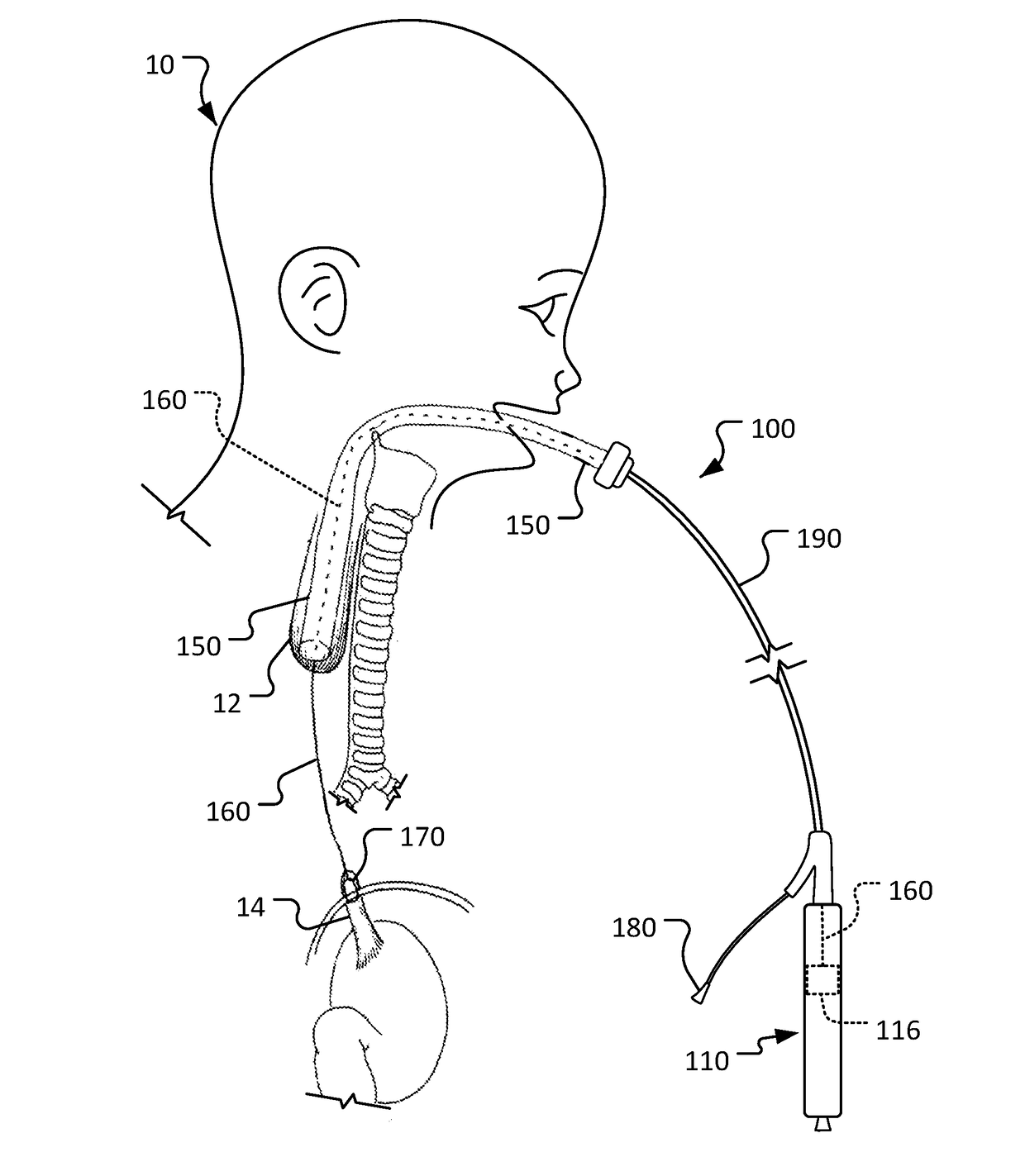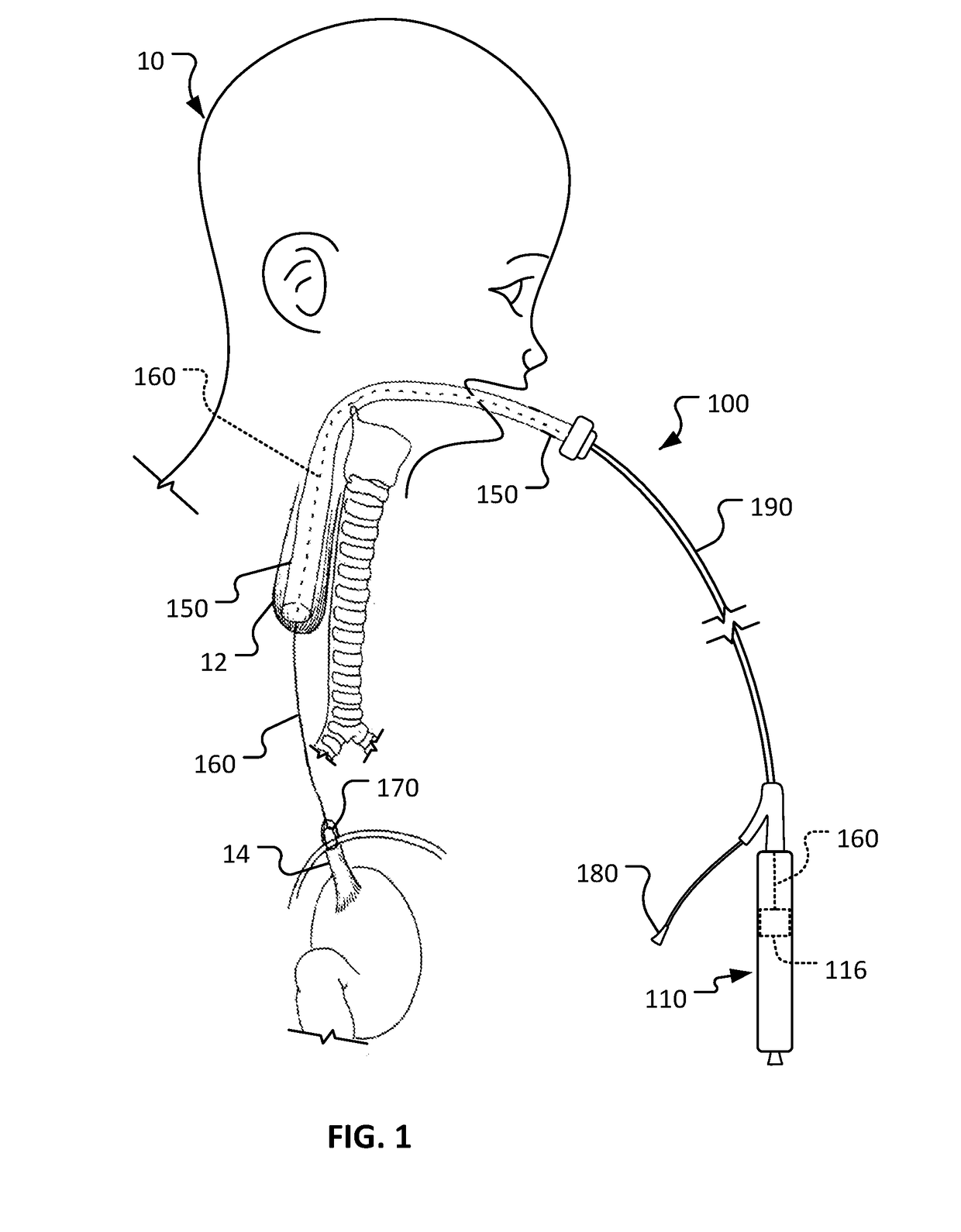Medical devices and methods for body conduit lengthening and anastomosis formation
a technology of anastomosis and medical devices, which is applied in the field of medical devices and methods for body conduit lengthening and anastomosis creation, can solve the problems of increasing the risk of stricture formation, the inability to repair pure ea with a single procedure, and the inability to achieve single procedure, so as to reduce the risk of stricture formation, the length of hospitalization, and the potential for trauma and complications.
- Summary
- Abstract
- Description
- Claims
- Application Information
AI Technical Summary
Benefits of technology
Problems solved by technology
Method used
Image
Examples
Embodiment Construction
[0017]This document describes devices for body conduit lengthening and anastomosis creation, and methods for their use. For example, among other uses, this document describes esophageal lengthening and anastomosis devices that can be used to remedy esophageal atresia in neonatal patients. While the examples and description provided herein are generally in the context of treatment of long gap EA, it should be understood that the devices and methods can also be similarly used for a variety of other medical treatments such as, but not limited to, repair of duodenal atresia, multiple types of natural orifice transesophageal surgery anastomoses, endoscopic stricturoplasty of various body conduits, and creation of ileal pouch anal anastomosis. Moreover, the devices and methods provided herein can also be used to similarly treat other body lumen and conduits such as, but not limited to, blood veins, arteries, fallopian tubes, urethrae, ureters, and the like.
[0018]In one non-limiting exampl...
PUM
 Login to View More
Login to View More Abstract
Description
Claims
Application Information
 Login to View More
Login to View More - R&D
- Intellectual Property
- Life Sciences
- Materials
- Tech Scout
- Unparalleled Data Quality
- Higher Quality Content
- 60% Fewer Hallucinations
Browse by: Latest US Patents, China's latest patents, Technical Efficacy Thesaurus, Application Domain, Technology Topic, Popular Technical Reports.
© 2025 PatSnap. All rights reserved.Legal|Privacy policy|Modern Slavery Act Transparency Statement|Sitemap|About US| Contact US: help@patsnap.com



